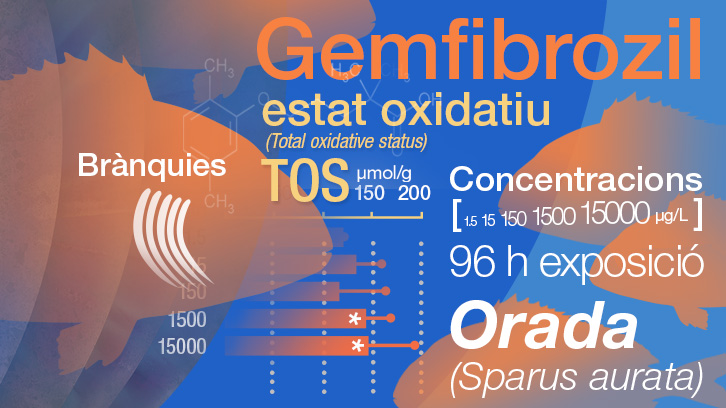Tools to assess effects of human pharmaceuticals in fish

The need to develop and validate biomarkers for monitoring programs is emphasized by the EU legislations like European Union’s Water Framework Directive and Marine Strategy Framework Directive 2008/56/EC aiming to improve, protect and prevent further deterioration of the European aquatic environment. In this sense, methods sensitive to alterations in the oxidative status resulting from exposure to contaminants (e.g. pesticides, pharmaceuticals, nanoparticles) may be valuable early warning tools to detect anthropogenic induced homeostatic perturbations.
In general, oxidative stress related parameters are measured separately, a time consuming, costly approach that frequently requires complicated techniques often not accurately reproducible. Total oxidative status (TOS) and total antioxidant capacity (TAC) are parameters that can be measured in automatic analysers, in a reproducible and fast way. Esterase activity (EA), reported as a valuable biomarker of antioxidant activation and immune response, can also be measured by automatic analysers. These biomarkers have demonstrated their utility mainly in studies with humans and other mammals but, in aquatic organisms, there is a dearth of studies concerning the analytical validation of these methodologies and its application.
Gemfibrozil (GEM) is a pharmaceutical widely found in the aquatic environment. Considering that the available information on GEM effects to aquatic organisms is scarce, the present study used this pharmaceutical as a test substance also contributing to the highly-needed knowledge of effects of human pharmaceuticals to non-target organisms.
In this study we choose gills as target organ. Why? Because the gills of fish constitute a multifunctional organ with essential osmoregulatory, respiratory and immunologic roles, kept in close contact with the external medium and waterborne environmental contaminants, as well as contaminants taken up by other exposure routes and thus, sensitive to different contamination profiles. Moreover, biopsies from the gills can be performed without the need to sacrifice the animal, making the study of this organ highly relevant.
In this context, the present research work aimed to optimize and validate a sensitive methodology to assess oxidative pressure in the gills of marine fish based on TOS, TAC and EA, with applicability on environmental monitoring and aquaculture. For that purpose, fish were exposed for 96 h to different concentrations of GEM and TOS, TAC and EA evaluated in the gills.
Results showed that the three potential biomarkers of oxidative status (TOS, TAC and EA) are robust, totally automated and cost effective. In the future they will facilitate widespread studies and applications in samples of fish.
Concerning the biological responses of fish to GEM exposure, higher levels of TOS were found in the gills of S.aurata exposed to the two highest concentrations of GEM, reflecting an imbalance between the antioxidant/oxidative systems, probably due to an increased production of reactive oxygen species (ROS). However, TAC activity was unaltered suggesting incapacity or delayed response to the increased oxidative pressure. Considering that a single exposure period was assessed, this could just be a transient situation. Data suggested oxidative stress, although it was not clear if this imbalance was strong enough to be inducing oxidative damage (e.g. lipid peroxidation). The unchanged EA activity, suggests that this enzyme is probably not involved in the protection against oxidative effects induced by GEM.
Overall, the present study validated TOS, TAC and EA methods for the gills of S.aurata. TOS was the most sensitive endpoint assessed revealing an increased oxidative pressure that was not concomitant with antioxidant defences increase. Thus, the assessment of TOS in gills appears as a promising tool for biomonitoring studies.
References
Oliveira, Miguel & Franco Martínez, Lorena & Balasch, Joan & Fierro-Castro, C & Tvarijonaviciute, Asta & Soares, A.M.V.M. & Tort, Lluis & Teles, Mariana. (2017). Tools to assess effects of human pharmaceuticals in fish: A case study with gemfibrozil. Ecological Indicators.
DOI: 10.1016/j.ecolind.2017.12.051.


